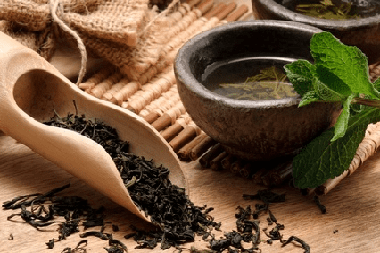Phytotherapy >>>> Herbal medicine for diseases of the skin and mucous membranes
Herbal medicine for diseases of the skin and mucous membranes.

Diseases of the skin and mucous membranes, as a rule, are accompanied by inflammatory processes, persistent erythema, irritation, itching, excessive dryness and keratinization, violation of the integrity (cracking) of the skin and mucous membranes. Herbal medicine is faced with the task of alleviating, minimizing or, if possible, eliminating the above troubles of the course of diseases of the skin and mucous membranes. But herbal medicine cannot assume the obligation to completely cure diseases that cause these severe symptoms, since many diseases of the skin and mucous membranes are directly related to metabolic disorders, or surface damage by bacteria, viruses, fungi or other microorganisms. And this is already the sphere of activity of other areas of medicine: dermatology, immunology, allergology, endocrinology and other areas of medical practice. Therefore, we will focus on the use of phytotherapeutic agents of external influence to relieve painful symptoms.
Plants that stimulate tissue regeneration and reduce inflammation:
- Chamomile officinalis (flowers) - rinses, lotions, baths
- St. John's wort (leaves and flowers) - rinses, lotions, baths
- Bidens tripartita (leaves before flowering) - externally trays and lotions
- Calendula officinalis (flowers) - rinses, lotions, baths
- Salvia officinalis (leaves) - rinses, lotions, baths
- Yarrow (leaves and flowers) - rinses, lotions, baths
- Plantain large (leaves) - lotions, baths
- Aloe (leaves) - lotions, baths
Plants for external hemostatic and wound healing action:
- Common vermilion (leaves) - lotions, baths
- Field bindweed (aerial part of the plant) - lotions, baths
- Highlander pepper (leaves) - lotions, baths
- Highlander bird (leaves) - lotions, baths
- Stinging nettle (leaves) - rinses, lotions, baths
- Spring cleanser (leaves before flowering) - only for rinsing and external use, as it contains poisonous alkaloids, especially during the flowering period
- Yarrow (leaves and flowers) - rinses, lotions, baths
- Shepherd's purse (aerial part of the plant) - lotions, baths
- Calendula officinalis (flowers) - lotions, baths
- Burdock large (roots) - lotions, baths
- Kupena medicinal (roots) - for external use only: lotions, baths
Plants of external emollient action for boils and abscesses:
- Melilotus officinalis (leaves) - contains dicumarin, which prevents blood clotting
- Horned lyadvenets (grass) - lotions
- Bulb onion (bulb)
Plants with external antiseptic action:
- Sandy immortelle (flowers) - rinses, lotions, baths
- Oregano (flowers) - rinses, lotions, baths
- Common juniper (needles) - rinses, lotions, baths
- Common thyme or creeping thyme (leaves) - rinses, lotions, baths
- Chamomile officinalis (flowers) - rinses, lotions, baths
- St. John's wort (leaves and flowers) - rinses, lotions, baths
- Eucalyptus (leaves) - rinses, lotions, baths
- Peppermint (leaves) - rinses, lotions, baths
- Field horsetail (leaves) - lotions, baths
Plants of tanning action:
- Oak bark (bark)
- White birch (buds, leaves before flowering, bark) - the bark contains more tannins
- Green tea
- Black tea
Plants containing phytoncides:
- Common calamus or marsh (roots)
- Oregano (flowers) - rinses, lotions, baths
- Peppermint (leaves) - rinses, lotions, baths
- Eucalyptus (leaves) - rinses, lotions, baths
- Salvia officinalis (leaves) - rinses, lotions, baths
How to prepare a drug from medicinal plants.
It is not necessary to boil the plant preparations over a fire, since during evaporation the useful components volatilize or are destroyed. Infusions are made either by brewing or by heating in a water bath.
For rinsing:
Pour one tablespoon of the dry component (or a teaspoon of each of the components of the collection) with a glass of boiling water, leave for 30 minutes, drain. Rinse with cooled infusion. Or prepare an infusion in a water bath (this option allows you to save a larger amount of useful components that can collapse during brewing).
For lotions (applications) or baths:
Brew one or two tablespoons of the component (or a teaspoon of different components of the collection) with a glass of boiling water or cook in a water bath, leave for 30 minutes, strain, use warm. Apply a cloth folded in several layers and soaked in cotton infusion to the affected areas for 15-30 minutes, or wrap for 30-60 minutes, or keep in a bath for 10-15 minutes.
For baths:
Three cups of a component or mixture of components are required per half bath. Pour the bathtub halfway with very hot water (boiling water can be added), add the dry mixture and wait until the water becomes warm and you can immerse yourself in it.
How to use and combine herbal preparations.
Acute inflammatory processes, edema, itching of the skin and mucous membranes are good to remove with infusions of a series, calendula, chamomile or other herbal collections from the group of plants that relieve inflammation and stimulate regeneration. If there are violations of the integrity of the skin or mucous membranes, then add plants of the group of antiseptics, and / or wound healing. Plants with a tanning effect (containing tannins) are added to infusions when it is necessary to dry the wounds or thicken the skin (or mucous membranes). Do not use tanning herbal remedies if there is a process of increased keratinization or excessive dryness of the skin, as they will worsen the condition of the skin. And do not add plants containing phytoncides for cracking, wounds, acute pustular inflammation, as they can have an irritating effect. Usually, plants containing phytoncides are used for antiseptic purposes.
Remember that:
St. John's wort has a photosensitizing effect (promotes increased sensitivity to sunlight), so you should not use it before going outside.
Skin diseases with a weeping effect (for example: psoriasis, eczema) do not tolerate lotions, compresses. For them, this is unnecessary irritation, trauma, therefore, in such cases, it is better to do with baths, followed by softening the skin with creams.

Read

Read



























